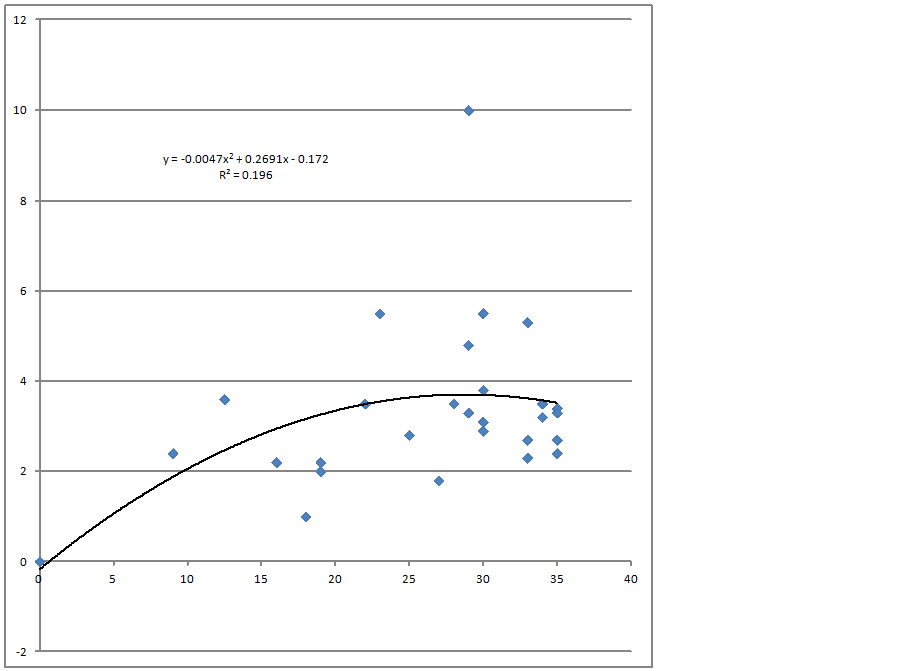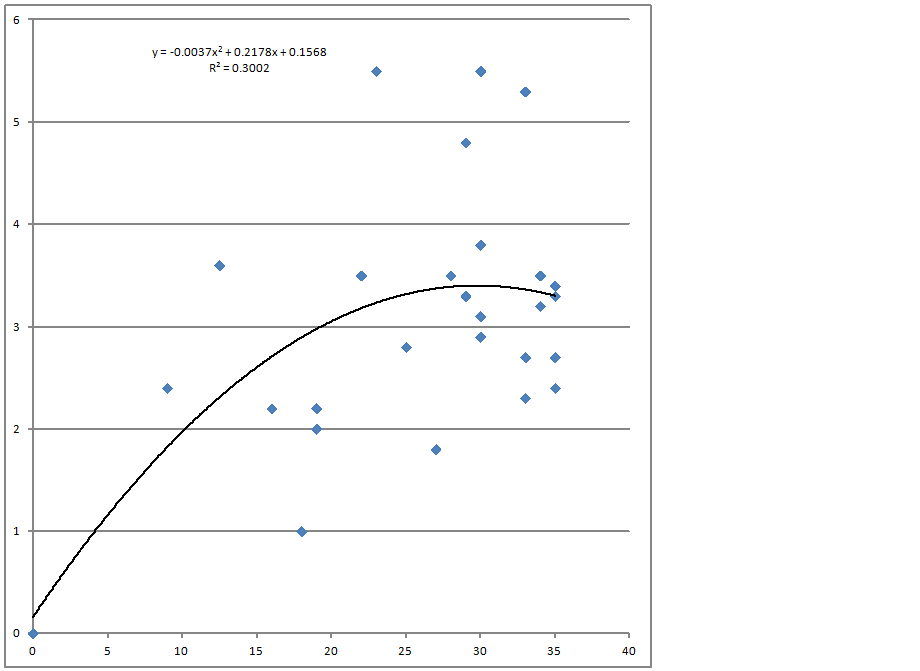Twitter is serendipitous to me.? I don’t track it all day long, or I would never get anything done.? Usually, I keep it off, unless I am sending off tweets.? But I accidentally saw a tweet from Cardiff Garcia of FT Alphaville. regarding a presentation done by Brad DeLong.? Here it is:
So I looked, and here is what I found:
I looked at it and said, “Huh, yeah, whoever did this was a total hack.? Totally arbitrary curve drawing.”? But then I thought a little more.? “If I estimated a quadratic equation (parabola) what would it look like versus the data?”
So I took the points and eyeball estimated the values, and dropped them into an Excel spreadsheet, and ran the regression.? Turns out that both DeLong and the Wall Street Journal, and those they relied on were wrong.? Remember that the horizontal axis is marginal corporate tax rate, and the vertical axis is corporate taxes received as a percentage of GDP.
At a 5% level of significance, the equation is not significant, and the coefficients are not significant, though they are close.? The signs all go the right way, and the intercept is near zero.? That said, the prob-value for the equation as a whole (F test), is 6.5%, not far from the 5% threshold, so it looks like there is some validity to the idea that as marginal corporate tax rates rise, so do corporate taxes as a percentage of GDP, until the taxes get too high.
Only one data point of the above analysis, Norway, is statistically significant, with an error 3+ standard deviations versus the model.? Norway is different, with its huge sovereign wealth fund, so what happens to the model if we exclude it, and re-run the model?
Under these conditions, at a 5% level of significance, the equation is significant, with a prob-value of 1.4%, and all but one of the coefficients are significant, and the coefficient on the squared term has a prob value of 11.6%.? The signs all go the right way, and the intercept is near zero.? It looks like there is some validity to the idea that as marginal corporate tax rates rise, so do corporate taxes as a percentage of GDP, until the taxes get too high.
I didn’t test anything else.? With both equations we learn two ideas:
- The tax take tops out at a 30% marginal rate
- You don’t give up much if you set the marginal rate at 20%
Now, this is a cursory analysis on a limited data set.? But the idea that corporations start to go elsewhere when tax rates get too high is a reasonable hypothesis.? The WSJ analysis was a joke, but so was DeLong’s dismissal of the data.
I’m no great fan of the idea of the Laffer Curve, never have been, but this was the first time I gained some sympathy for the idea.? So, be wary who you listen to, study statistics and their limitations, and generally, be skeptical, but not cynical.? There is truth out there, we just need to find it.
PS — If anyone wants me to publish the detailed statistics, I will, but I omitted them because they make most of my readers’ eyes glaze over.




